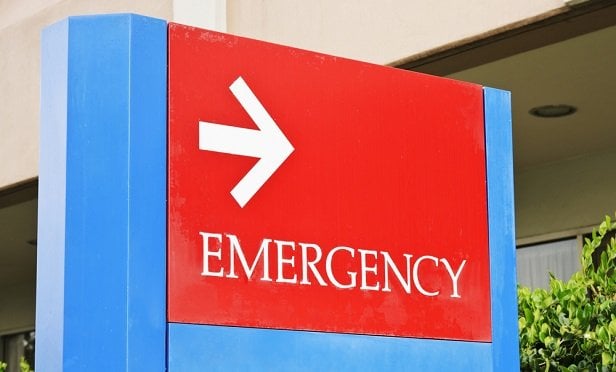 it was initially expected that Medicaid expansions would actually reduce the number of emergency room visits, since more people would have access to health care before situations devolved into emergencies. (Photo: Shutterstock)
it was initially expected that Medicaid expansions would actually reduce the number of emergency room visits, since more people would have access to health care before situations devolved into emergencies. (Photo: Shutterstock)
It's not that patients in the states that have expanded Medicaid suffer more emergencies; it's that if they're covered under Medicaid, they don't have to worry about debt collection.
As reported by Modern Healthcare, multiple studies have found that there's been a significant increase in the number of patients hitting the emergency room for nonemergency conditions in states that have expanded Medicaid.
Related: More skip care in states lacking Medicaid expansion
Although it was initially expected that Medicaid expansions would actually reduce the number of emergency room visits, since more people would have access to health care before situations devolved into emergencies, that has not proved to be the case, according to a new Brookings Institution study by health economists. In fact, an April study from JAMA arrived at similar findings.
The Brookings study found that new Medicaid patients went to hospitals 20 percent more after they got coverage than they did prior to coverage, and mostly went to the emergency room rather than nonemergency care. And the authors say such a result isn't a big surprise, thanks largely to the emergency care mandate on hospitals known as EMTALA (Emergency Medical Treatment and Active Labor Act). While emergency departments can't turn away patients who can't pay for their care, they can still bill them after the fact, often going to great extremes to try to retrieve their costs.
But Medicaid patients don't have to worry about being dunned for such bills—a major reason many did not seek treatment before being covered. In addition, they don't have to go through the sometimes arduous process of finding a doctor who accepts their plan for an office visit if they just go to the emergency room.
The study's authors also found that there was no increase in actual emergency or "nondeferrable" visits to hospital EDs, writing, "This pattern of estimates is intuitive. Medicaid expansion effectively lowers the price of an ED visit for the patient, and so we would expect for an increase in visits for those that are discretionary."
There was significant variation from state to state, however, among the 20 states they studied, with some experiencing large shifts in hospital utilization rates and others seeing very little. Their conclusion, according to the report, was that states' ability to target medical coverage to people who need it most "varied meaningfully."
Read more:
- ACA, Medicaid expansion improved cancer treatment access
- Medicaid expansion takes a bite out of medical debt
- Medicaid expansion cheaper than ACA subsidies
© 2025 ALM Global, LLC, All Rights Reserved. Request academic re-use from www.copyright.com. All other uses, submit a request to [email protected]. For more information visit Asset & Logo Licensing.







